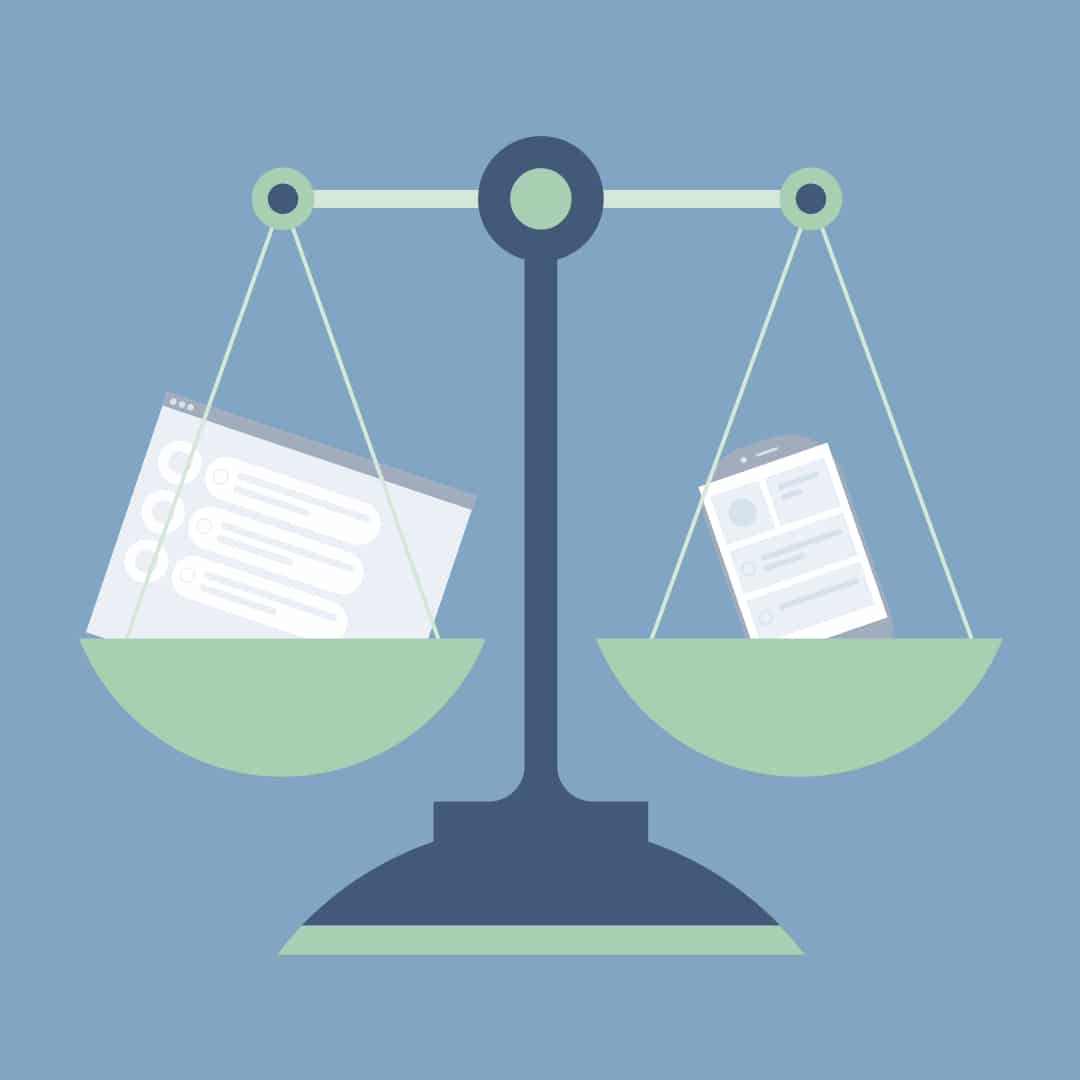How can I avoid using calls-to-action that are not A/B tested?
To avoid using untested calls-to-action (CTAs), always implement A/B testing before deployment. This ensures your CTAs are optimized for effectiveness, driving better engagement and conversions. Testing eliminates guesswork, providing data-driven decisions for successful marketing campaigns.

Understanding the Importance of A/B Testing in Calls-to-Action
A call-to-action (CTA) is a critical component in any marketing strategy. Whether it’s a button, a link, or a persuasive line of text, CTAs are designed to prompt your audience to take the desired action. However, the effectiveness of a CTA is not a given—it requires careful crafting and, most importantly, thorough testing. Without A/B testing, your CTAs might not perform as well as they could, which could lead to missed opportunities for lead generation and sales.
Why A/B Testing is Crucial for CTAs
A/B testing, or split testing, involves comparing two versions of a CTA to determine which one performs better. This method allows you to optimize your CTAs by analyzing which version converts more visitors into leads or customers. Without this testing, you're essentially guessing what might work, which is not a reliable strategy for achieving your business goals.
The Risks of Using Non-Tested CTAs
Using CTAs that haven’t been A/B tested can be risky. You might be deploying a CTA that is not compelling enough or is not placed optimally on the page. This can lead to lower conversion rates, higher bounce rates, and ultimately, lost revenue. Without data to back up your CTA choices, you're relying on intuition, which may not always align with your audience’s preferences.
How to Identify CTAs That Need A/B Testing
The first step in avoiding the use of non-tested CTAs is to identify which ones require testing. Any CTA that plays a significant role in your lead generation or sales process should be tested. This includes CTAs on landing pages, in emails, on social media, and within blog posts. If a CTA has a direct impact on your conversion rates, it needs to be A/B tested.
The Process of A/B Testing Your CTAs
To effectively A/B test your CTAs, start by creating two versions of the CTA you want to test. These versions should differ in one key element—this could be the text, color, size, or placement. Next, deploy both versions to your audience in a controlled environment. Use analytics tools to track the performance of each version, paying close attention to conversion rates, click-through rates, and other relevant metrics. Once you have enough data, analyze the results to determine which CTA performed better.
Common Mistakes to Avoid During A/B Testing
Even if you're committed to A/B testing your CTAs, there are common mistakes that can skew your results. One mistake is testing multiple elements at once, which makes it difficult to determine which change led to the improved performance. Another mistake is ending the test too early, before you have enough data to make a statistically significant decision. Additionally, failing to segment your audience can lead to inaccurate results, as different segments may respond differently to the same CTA.
Implementing the Winning CTA
Once you've identified the winning CTA from your A/B test, it's time to implement it across your marketing channels. This means updating your landing pages, email campaigns, and any other platforms where the CTA is used. However, the process doesn't end here. Continuous testing is essential, as what works today may not work tomorrow. Regularly update and test your CTAs to ensure they remain effective as your audience and market conditions evolve.
The Role of Design in CTA Effectiveness
Design plays a crucial role in how effective your CTA will be. Factors like color, size, and placement can significantly impact how many people click on your CTA. When A/B testing, consider testing these design elements as well. For instance, you might find that a larger, more prominently placed CTA button results in more clicks. Alternatively, a color that contrasts with the rest of your page might make the CTA stand out more, leading to higher conversion rates.
The Importance of CTA Copy
While design is important, the copy used in your CTA is equally crucial. Your CTA copy needs to be clear, concise, and compelling. It should communicate the value of taking action and create a sense of urgency. During A/B testing, experiment with different phrasing and tones to see which resonates best with your audience. For example, a more casual, friendly tone might perform better with younger audiences, while a more formal tone might be better suited to a professional demographic.
Tracking CTA Performance Over Time
It's not enough to just test your CTAs once and forget about them. You need to track their performance over time to ensure they remain effective. Market trends, consumer behavior, and even seasonal changes can all impact how your audience responds to your CTAs. Regularly review your analytics to see if your CTAs are still driving conversions. If you notice a drop in performance, it might be time to run a new A/B test to see if an updated version of the CTA could perform better.
Leveraging Customer Feedback for Better CTAs
One often-overlooked aspect of creating effective CTAs is incorporating customer feedback. Your audience can provide valuable insights into what motivates them to take action. Use surveys, interviews, and feedback forms to gather this information, and then apply it to your A/B testing process. This can help you create CTAs that are more aligned with your audience’s needs and preferences, leading to higher conversion rates.
The Role of Psychological Triggers in CTAs
Psychological triggers can be a powerful tool in crafting effective CTAs. These triggers tap into basic human emotions and motivations, such as fear of missing out (FOMO), desire for exclusivity, or the need for social proof. When A/B testing your CTAs, experiment with different psychological triggers to see which ones resonate most with your audience. For example, a CTA that emphasizes limited-time offers might perform better than one that simply invites users to learn more.
Optimizing CTAs for Different Devices
In today's digital landscape, your audience is likely accessing your content from a variety of devices, including desktops, tablets, and smartphones. This means your CTAs need to be optimized for all device types. During your A/B testing, make sure to test how your CTAs perform across different devices. A CTA that works well on a desktop might not be as effective on a mobile device if it's too large, too small, or not placed optimally.
The Impact of CTA Placement on Conversion Rates
Where you place your CTA on a page can have a significant impact on its effectiveness. CTAs placed above the fold, meaning they are visible without scrolling, tend to perform better. However, depending on the content and context, a CTA placed at the end of a persuasive piece of content might also perform well. A/B testing can help you determine the optimal placement for your CTAs to maximize conversions.
The Benefits of Personalizing CTAs
Personalization can greatly enhance the effectiveness of your CTAs. By tailoring the CTA to the individual user based on their behavior, preferences, or demographic information, you can make the CTA more relevant and compelling. For example, a personalized CTA might address the user by name or reference a product they’ve shown interest in. A/B testing can help you identify the most effective ways to personalize your CTAs for different segments of your audience.
Avoiding CTA Fatigue
CTA fatigue occurs when your audience becomes desensitized to your CTAs due to overexposure. If you use the same CTA repeatedly without any variation, it can lose its effectiveness. To avoid CTA fatigue, regularly refresh your CTAs by testing new designs, copy, and placement. This keeps your CTAs fresh and engaging, helping to maintain high conversion rates.
The Relationship Between CTAs and Landing Pages
Your CTA doesn’t exist in a vacuum; it’s part of a larger ecosystem that includes your landing pages. The effectiveness of a CTA is closely tied to the landing page it leads to. If there’s a disconnect between the promise made by the CTA and the content of the landing page, your conversions will suffer. When A/B testing your CTAs, make sure to also consider the landing page experience and test different versions to ensure they are working together harmoniously.
The Importance of Consistency in CTA Messaging
Consistency in messaging is key to building trust with your audience. If your CTA says one thing but the landing page or follow-up action doesn’t deliver on that promise, you risk losing credibility. During your A/B testing process, ensure that the messaging in your CTAs is consistent with the rest of your marketing materials. This helps create a seamless experience for your audience, increasing the likelihood of conversion.
Utilizing Analytics to Inform CTA Strategy
Analytics tools provide invaluable insights into how your CTAs are performing. By closely monitoring metrics such as click-through rates, conversion rates, and bounce rates, you can gain a better understanding of what’s working and what’s not. Use this data to inform your A/B testing strategy, ensuring that you’re making data-driven decisions that will improve your CTA performance over time.
The Role of Emotion in CTA Effectiveness
Emotion plays a significant role in decision-making, and this extends to how users respond to CTAs. A CTA that evokes a strong emotional response is more likely to prompt action. Whether it’s excitement, urgency, or a sense of belonging, tapping into the right emotion can significantly boost your CTA’s effectiveness. When A/B testing your CTAs, consider experimenting with different emotional appeals to see which resonates most with your audience.
The Power of Simplicity in CTAs
Sometimes, less is more when it comes to CTAs. A simple, straightforward CTA can be more effective than one that is overly complex or verbose. During your A/B testing, experiment with simplifying your CTAs to see if this leads to higher conversion rates. A clear, concise message is often easier for users to understand and act upon, which can result in better performance.
Integrating CTAs with Overall Marketing Strategy
Your CTAs should not exist in isolation; they should be an integral part of your overall marketing strategy. This means ensuring that your CTAs align with your brand messaging, target audience, and marketing goals. When planning your A/B testing, consider how each CTA fits into the broader context of your marketing efforts. This holistic approach can help ensure that your CTAs are as effective as possible.
The Future of CTA Optimization
As technology continues to evolve, so too will the methods for optimizing CTAs. Artificial intelligence and machine learning, for example, are already being used to automate A/B testing and optimize CTAs in real time. Staying ahead of these trends can give you a competitive edge, allowing you to continually refine your CTAs to achieve the best possible results. Keep an eye on emerging technologies and consider how they might be leveraged to enhance your CTA strategy.
FAQ
Why is A/B testing important for CTAs?
A/B testing is crucial because it allows you to compare different versions of a CTA to determine which one performs better. This data-driven approach helps you optimize your CTAs for higher conversion rates.
How often should I A/B test my CTAs?
You should regularly test your CTAs, especially when introducing new ones or when you notice a decline in performance. Continuous testing helps ensure your CTAs remain effective over time.
What elements of a CTA should I test?
You can test various elements of a CTA, including the text, color, size, placement, and design. Each of these factors can impact the CTA’s effectiveness.
Can I test multiple CTAs at once?
It's best to test one element at a time to clearly identify what is driving the results. Testing multiple elements simultaneously can make it difficult to determine which change led to the improved performance.
What should I do if my CTA’s performance declines?
If you notice a decline in performance, it's time to run a new A/B test. Market conditions and audience preferences can change, so regular testing is essential to maintaining high conversion rates.
How does personalization affect CTA performance?
Personalizing your CTAs can significantly improve their effectiveness by making them more relevant to individual users. A/B testing can help you determine the best ways to personalize your CTAs.
Why should I avoid using non-tested CTAs?
Non-tested CTAs are risky because they are based on assumptions rather than data. Without testing, you can't be sure that your CTA is optimized for the best possible performance.
Get in Touch
Website – https://www.webinfomatrix.com
Mobile - +91 9212306116
Whatsapp – https://call.whatsapp.com/voice/9rqVJyqSNMhpdFkKPZGYKj
Skype – shalabh.mishra
Telegram – shalabhmishra
Email - info@webinfomatrix.com
What's Your Reaction?
















